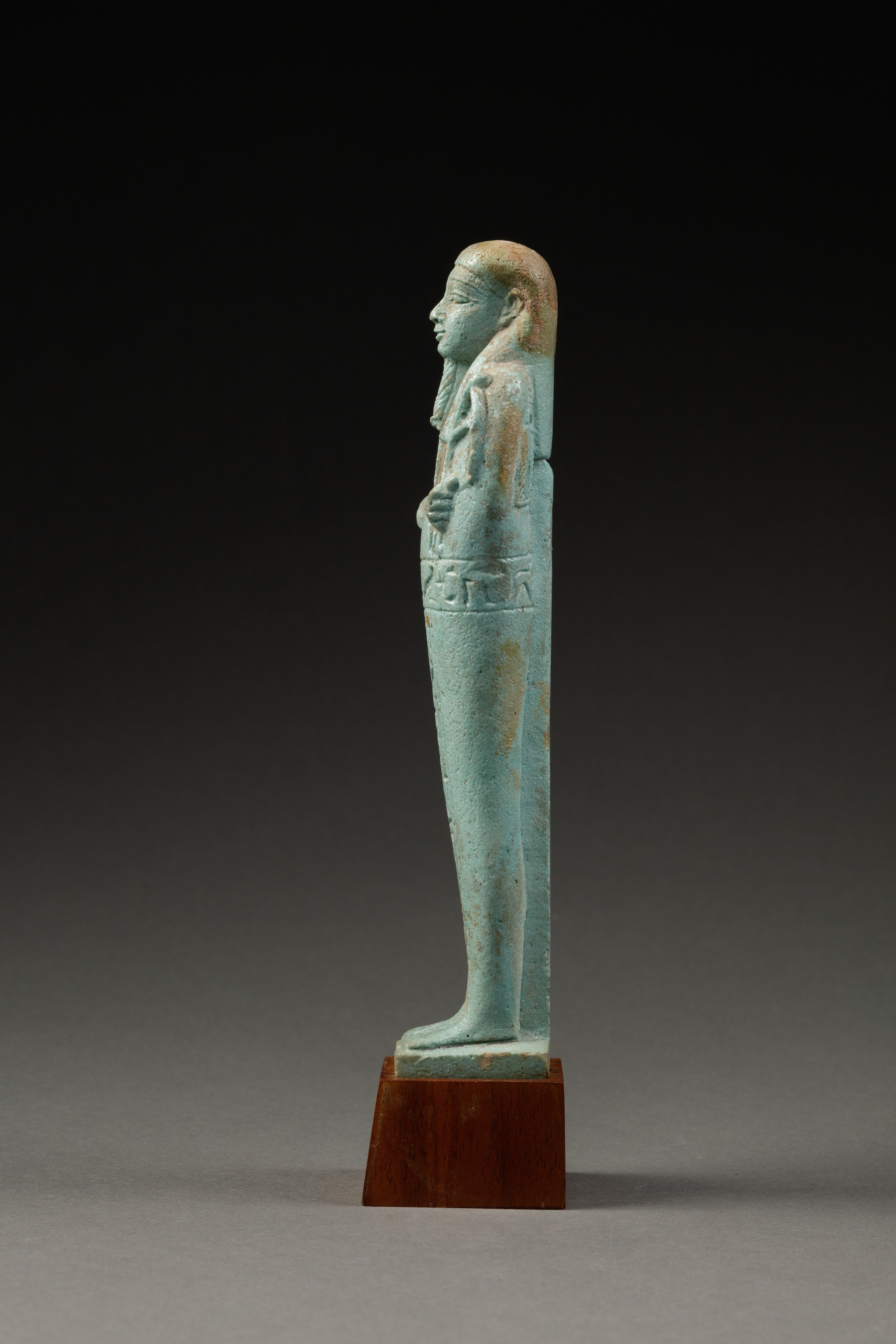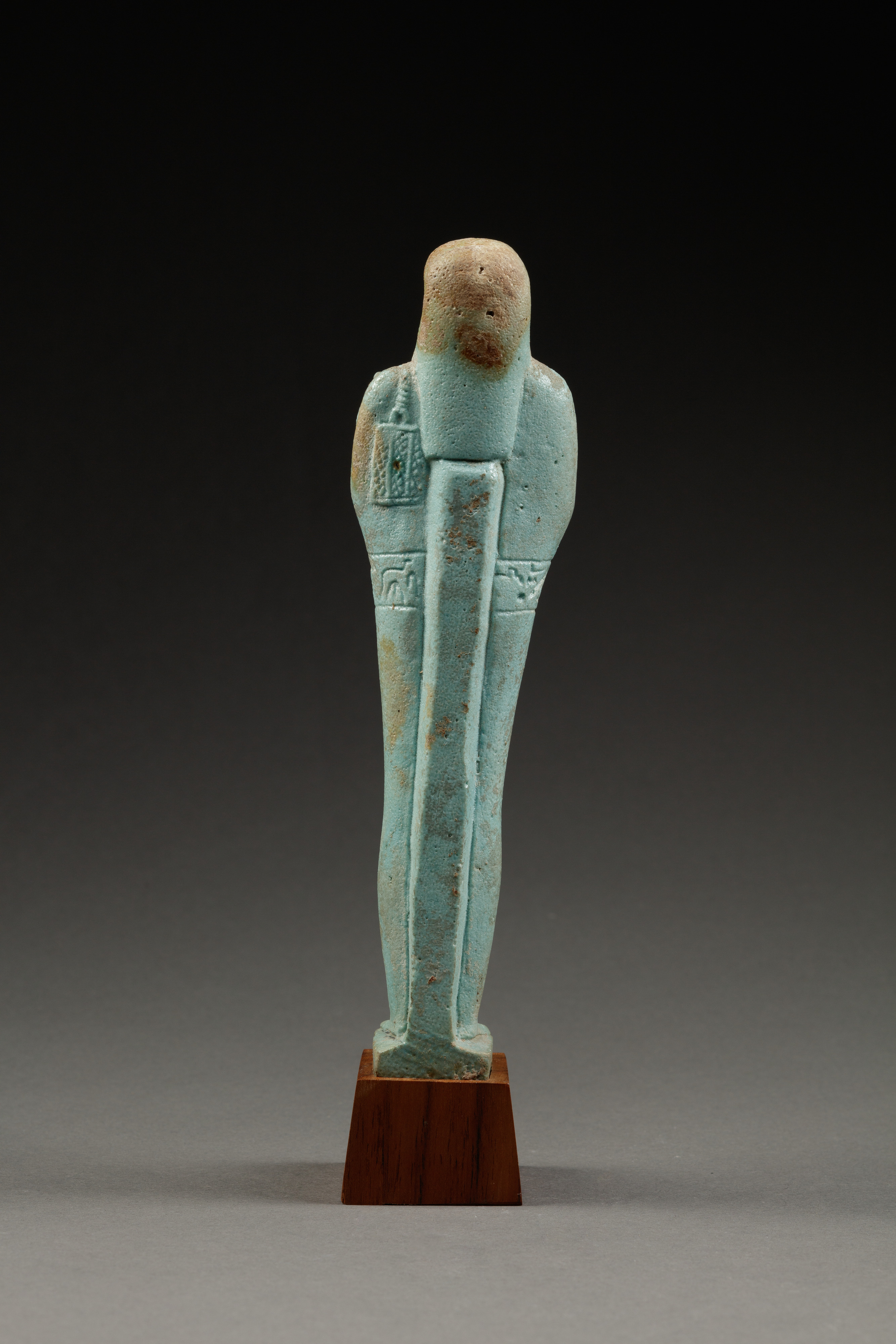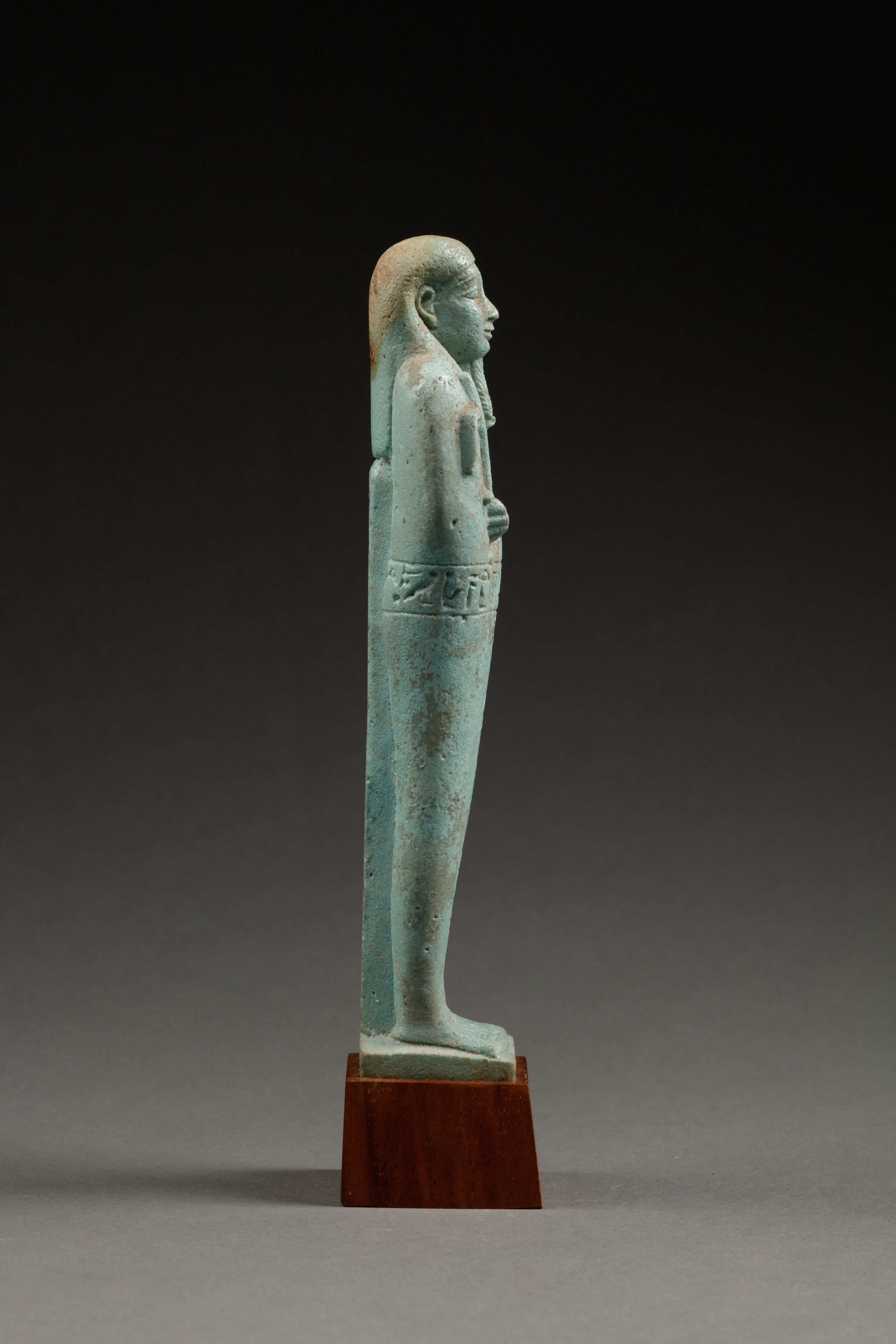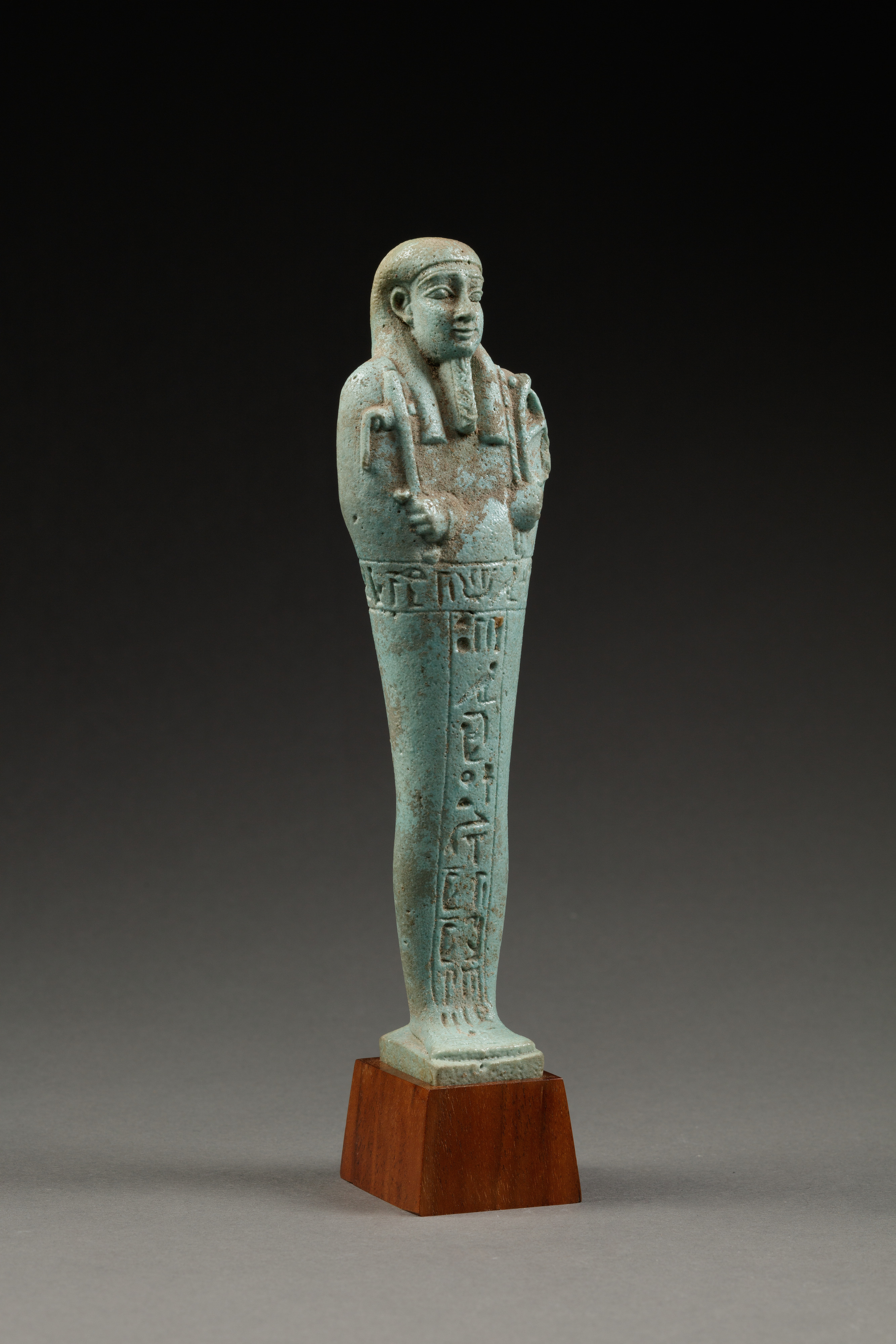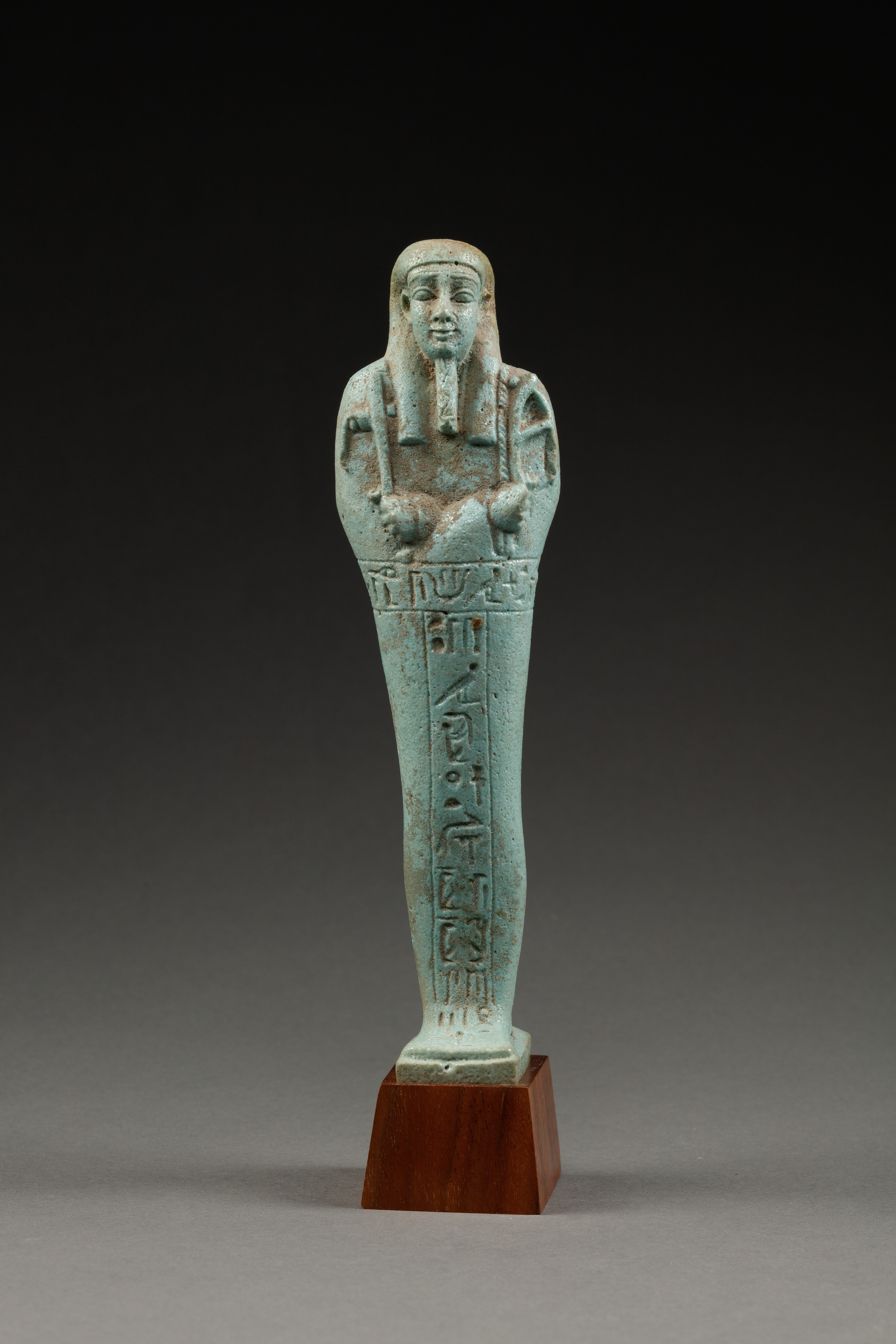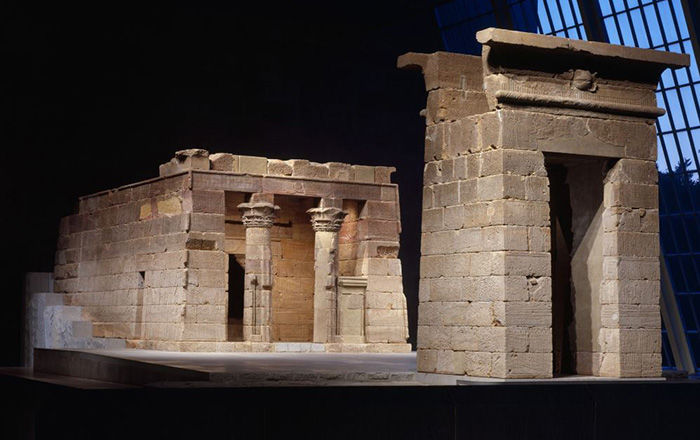Shabti inscribed for Nesbanebdjed
Late Period
This shabti comes from a tomb chamber discovered in 1902 at the site of the ancient city of Mendes (Tell el-Rub’a), the capital of Egypt for a short time during the Late Period. On top of a slab over this chamber were over 360 complete shabtis, plus a number of fragments and several amulets; in the chamber beneath was a mummy adorned with trappings of gold leaf (see Cairo CG 53465–53469). Most of the shabtis were inscribed, like this one, for the priest Nesbanebdjed. Of these, 322 had the type of T-shaped inscription seen here (see also 10.130.1044a and b). Several of Nesbanebdjed’s shabtis remained in Egypt; others can be found in museum and private collections around the world.
Nesbanebdjed’s priestly titles associate him with the cult of the ram-god Banebdjed, who was part of the Mendesian triad with the goddess Hatmehyt and the child god Harpocrates.
See below for a translation of the inscription.
This image cannot be enlarged, viewed at full screen, or downloaded.
This artwork is meant to be viewed from right to left. Scroll left to view more.



